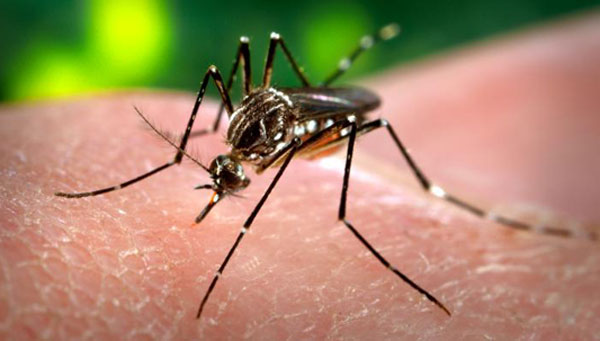
As a recent article in the Entomological Society of America’s (ESA’s) Entomology Today publication reports, the success of treating permethrin-resistant yellow fever mosquitoes (Aedes aegypti) with permethrin insecticide can vary depending on time of treatment.
This is per a finding of a Virginia Tech study that was published in the March issue of the Journal of Medical Entomology. The wild, but permethrin-resistant mosquito populations observed in the study were found to be the most vulnerable to insecticide between midnight and sunrise. Conversely, their resistance levels increased significantly during the day, peaking around dusk and in the early hours of the night, aligning with their most active periods.
This finding offering a strategic advantage for pest management professionals (PMPs): By timing treatments when mosquito susceptibility is highest, they can achieve greater efficacy, reduce overall pesticide use, and minimize environmental impact.
Lieutenant Sierra Schluep, a co-author of the study, noted in the article, “The highest doses of permethrin required for knockdown were observed at 6 p.m. and 10 p.m. These data suggest that permethrin applications made between midnight and dawn, 6 a.m., may be more effective against A. aegypti compared to applications made at dusk.”
While it might seem intuitive to treat when mosquitoes are most active and biting, this study challenges that assumption, at least concerning permethrin. Yellow fever mosquitoes primarily bite during the day, both indoors and outdoors, with peak activity typically observed shortly after sunrise and several hours before sunset. Artificial illumination can extend their activity into darker periods.
Aedes aegypti is a globally prevalent vector, found on all continents except Antarctica. It is a known carrier of viruses responsible for chikungunya, dengue, yellow fever, and Zika, and has been implicated in localized disease outbreaks in Florida.
In the article, Schluep cautions that these findings are specific to the yellow fever mosquito populations studied in Florida. Genetic variations influenced by geographical factors may affect susceptibility patterns elsewhere. However, she suggests that the research methodology and underlying principles could be extrapolated to enhance our understanding of other mosquito populations within the species.
A key discovery in the research involved certain genes responsible for producing enzymes that metabolize and detoxify permethrin. The expression, or functioning, of these genes was found to be influenced by daily light cycles, increasing after 2 p.m. and reaching peak activity in the dark between 6 p.m. and 2 a.m.
While the study focused on five specific genes, the insights gained may extend to other genes involved in detoxification. As Schluep summarizes in the article, “A better understanding of time-of-day variation in insecticide resistance mediated by detoxifying enzymes in A. aegypti could allow for targeted insecticide applications when susceptibility is highest and the upregulation of detoxification enzymes is lowest.”
Leave A Comment